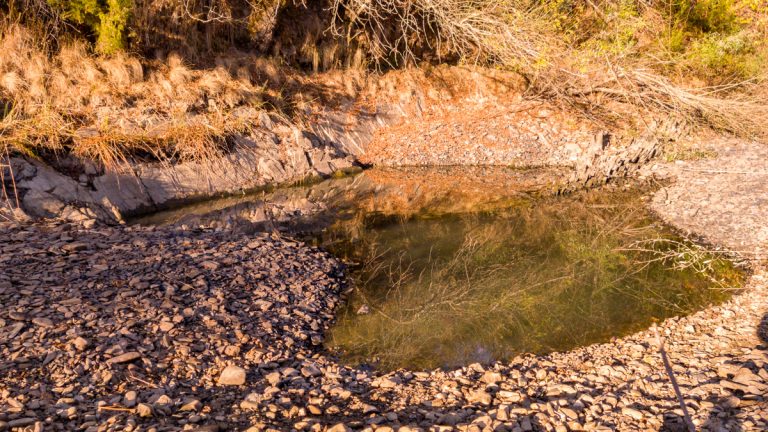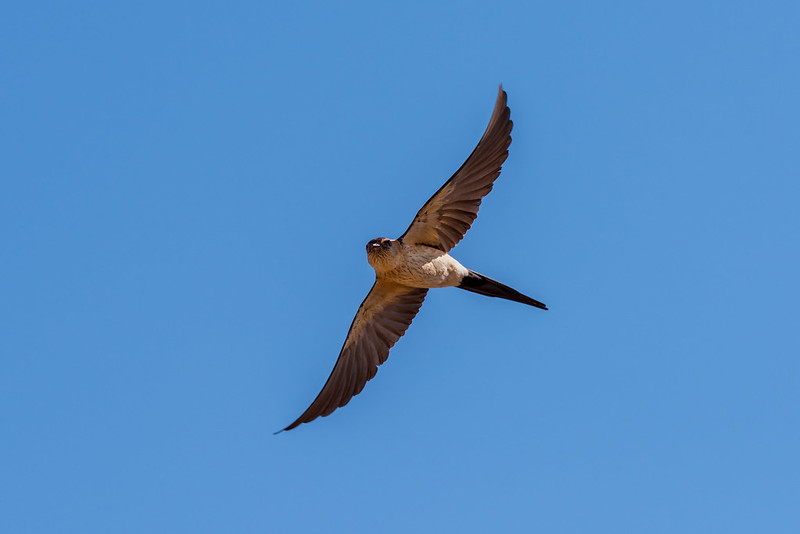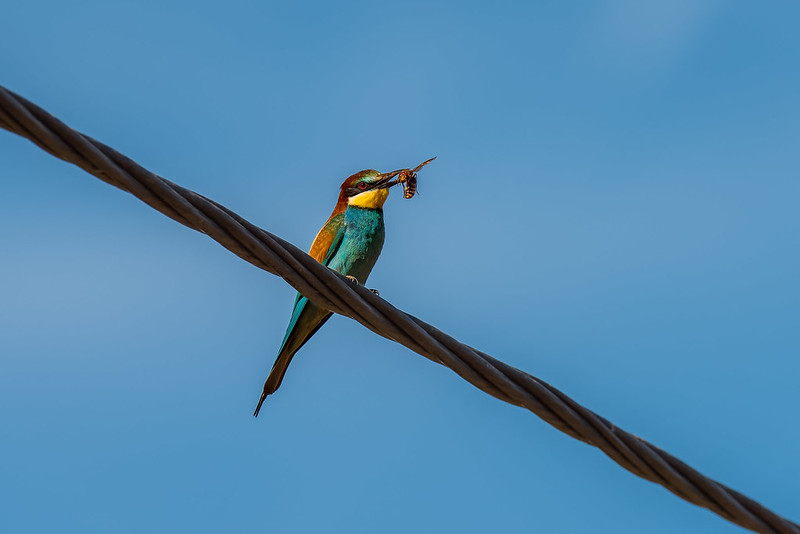
We are lucky to have the Odelouca River cut its way through part of our land, you notice I didn’t use the term run through our land. Usually, sometime in June the river runs dry and remains dry until the heavy Autumn rains kick-start it flowing at the end of October, beginning of November. We are up-stream of the Barragem do Odelouca which provides drinking water for the Algarve.
It’s the end of October and so far there hasn’t been any significant rain to make any difference. All around the river banks both on and near our land have well established tracks that wildlife use to access the river and for a while I have been wanting to set up my Bushnell trail camera to see what frequents the river.
At various meanders and bends on the river, pools form and stay deep enough all year for the aquatic life to seek refuge of the dry river bed. Of course, these pools not only provide drinking water for other wildlife, but food.
One of the tracks leading to the river passes under a wire fence and I took a look at some hair that had been caught. To be honest, I had no idea, but took a guess at Otters.



